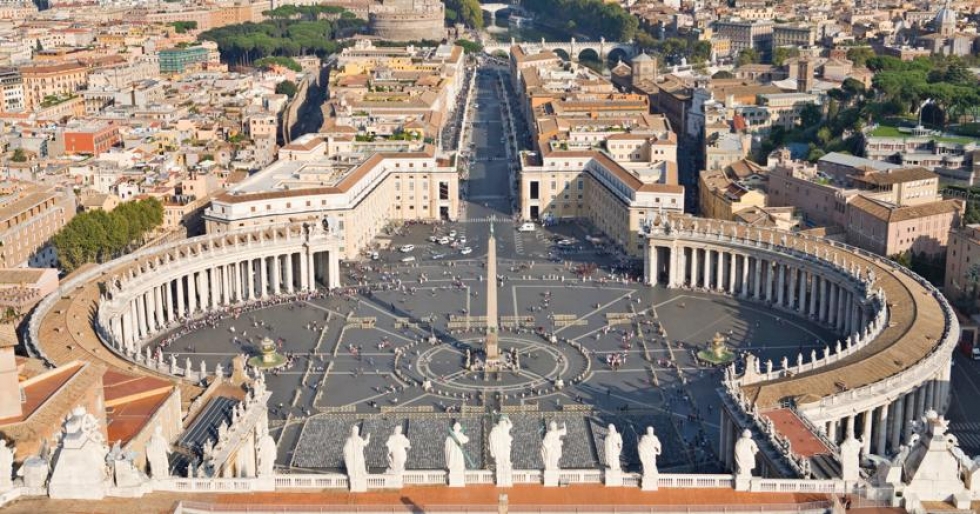Around his humble sepulchre - discovered in the 40s of the twentieth century - developed a Christian necropolis above which the Roman Emperor Constantine had a huge basilica built in honour of the apostles’ prince around 320 B.C.. Peter’s tomb lays about 4 metres under the major altar of the church. Since the beginning of the Roman Age this area has been called “ager Vaticanus”. But the origin of the word “Vaticanus” is controversial. The historian Varro, who lived in the first century B.C., believed that an Italic god called Vaticano (or Vagitano?!) had been idolized in the area. He was in charge of protecting new-born since their first wails. The same thesis is supported by Saint Augustine in his “City of God”. The writer Aulus Gellius, who lived two centuries after Varro, was of the opinion that the word derived from the “vaticinii”. These were prophecies that ministers - probably Etruscan - came to collect in the area from unknown gods. The Roman grammarian Sextus Pompeius Festus, who was Gellius’ contemporary, shared his opinion. In the last decades a new thesis was added to the others. It believes the word “Vaticanus” to come from “Vaticum”, an ancient village opposing Rome that used to be in the area around the ninth century B.C. Apart from the debate about the origin of its name, “the ager Vaticanus” didn’t enjoy a good reputation. It was a broad area on the right bank of the Tiber, mainly boggy because of the frequent floods of the river. In the few places where mosquitoes didn’t make it impossible for people to settle, small burial grounds - obviously pagan and not Christian - and a few vineyards started to rise from the beginning of the Republican period (509 B.C.). The Roman poet from the first century B.C. Martialis, famous for his incomparable sarcasm, described the wine produced here as awful and of poor quality. The situation changed completely around the first half of I century A.D., at the beginning of the imperial period when the area was reclaimed, two bridges connecting it to the rest of the city were erected and some noble families started to build their luxurious residences. Beside these wonderful dwellings started to develop the famous “horti”, big country gardens that could occupy several hectares. Among the most important there were the ones belonging to Agrippina the Elder, Caligula’s mother. They used to be where the Basilica lies now. On the inside, Caligula started building a great stadium that was brought to completion by Emperor Nero, who inherited it. Inside the stadium many Christians were executed, apparently the apostle Peter himself. An interesting fact: the day of Peter’s death remains unknown; the 29th of June is just a conventional date. It has been chosen since the ancient Romans used to celebrate Romulus and Remus. By using the same date the first Christian wanted to symbolize that Peter and Paul were to be the founders of a new Rome.
Giuseppe Rosselli




